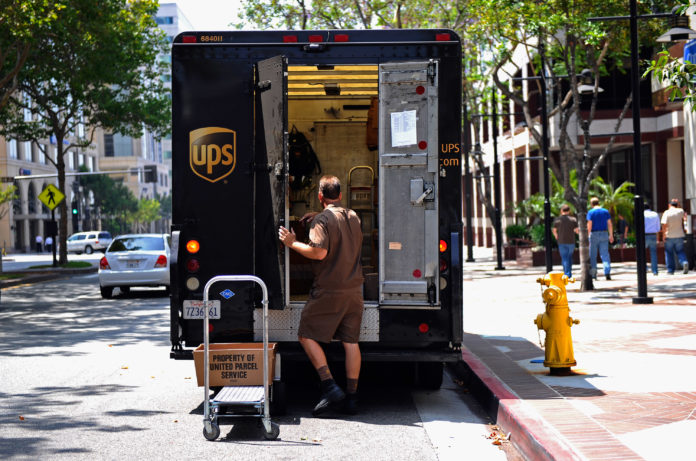The proliferation of ecommerce over the past six months has resulted in local job gains at delivery service businesses.
The most visible upticks include Atlanta-based United Parcel Service, which has 11,643 workers in Los Angeles County, about 3,500 more than last year, and Seattle-based Amazon.com Inc., which employs some 15,000 workers here.
Ecommerce was on the rise prior to the pandemic, accounting for 15% of all retail sales. The surge may taper off after the pandemic eases and shoppers feel comfortable returning to brick-and-mortar shopping centers, but downtown-based real estate giant CBRE Group Inc. projects that ecommerce will account for 39% of all retail U.S. sales by 2030.
Ecommerce has also spurred growing demand for next-day delivery services, and, with that, the need for more warehouse locations and distribution centers closer to consumers.
Companies catching onto that trend include A.P. Møller – Maersk, a Danish shipping giant that in February acquired Performance Team of El Segundo for $545 million in effort to improve its end-to-end supply chain capabilities.
Goodman Group, which has been actively acquiring and developing industrial properties across Southern California, last month opened a 1.2-million-square-foot logistics facility in El Monte. The company’s Chief Executive for North America Anthony Rozic called the addition “another building block in our company’s global gateway city strategy to better serve customers through urban logistics sites that are close to consumers.”
The logistics ecosystem also includes companies such as Culver City-based Flowspace Inc. and Warehouse Exchange in West Los Angeles that offer on-demand space for companies looking to house products quickly. Warehouse Exchange last week closed a 10-year deal with the Salvation Army to fill the nonprofit’s under-used warehouse space in 13 states.
While employment related to last-mile delivery appears to be on the rise locally, the pandemic was not as kind to the rest of the retail supply chain.
According to the Brookings Institution in Washington, D.C., there are 9.2 million trade and logistics workers, including truckers, material movers and cargo agents in the United States. Jobs related to trade, transportation, warehousing and storage in Los Angeles County added up to about 1.29 million positions in July, down 7% from 1.38 million in July 2019, according to data from state’s Employment Development Department and its Labor Market Information Division.
The count does not include some 8,000 dockworker jobs at the Port of Los Angeles and the neighboring Port of Long Beach, which have seen year-to-date cargo volumes dip 15.5% and 2.8%, respectively.
The ports are the two largest in the nation, handling approximately 37% of all waterborne goods entering the United States and some 60% of goods imported from China.
The double-digit dip in cargo volume recorded by the ports in the spring was spurred by the fallout of tariffs and the reduction in manufacturing in China due to the coronavirus outbreak there.
The drop included some 40 canceled vessel sailings between mid-February and April 1, or about 25% of normal vessel calls. The slowdown has prompted terminal operators to reduce the number of available labor shifts by about 50%, which also meant drayage trucks had fewer containers to transport to and from the ports.
Year to date, labor shiftwork is down by 16%, Port of L.A. Executive Director Gene Seroka said during a recent press conference, adding that he’s monitoring the numbers to make sure the labor downturn does not outpace declines in cargo volumes.
He also said, “The recent labor shift counts are moving at and just above our three-year average, which takes out some of the shocks we’ve seen in the supply chain and are encouraging to all of us at the port.”
Keep Reading the

